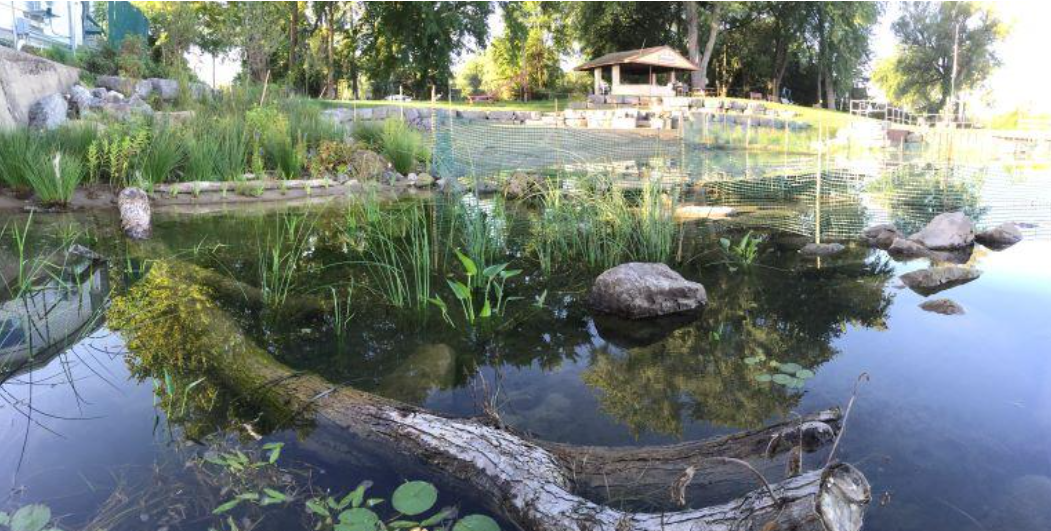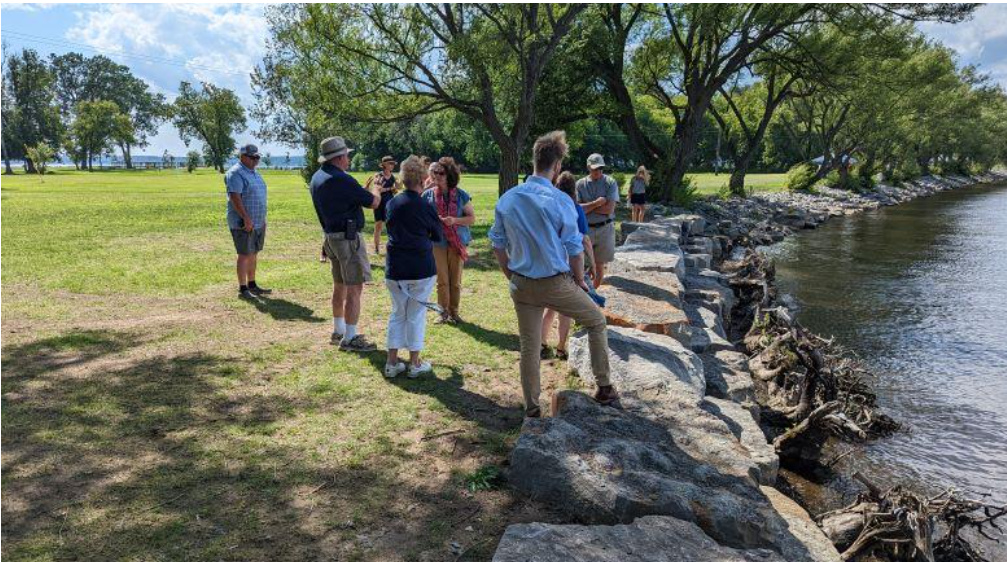Shoreline erosion is a constant issue for waterfront property owners. The action of wind, water, and ice against the shore impacts the natural environment and manmade structures.
Has River or lake action dislodged rip-rap along your shoreline? Do you have water-worn piers or stairs? Has the River stolen away some of your beach? Is water pooling on your waterfront lawn?
Help is freely available, virtually and in-person, to evaluate your options for remediation. Read on for more information about help available on the New York side of the St. Lawrence River and a contact for assistance on the Canadian side.
As a Coastal Processes and Hazards Specialist with New York Sea Grant (NYSG), Roy Widrig understands the interaction of hydrology and geology that makes location a key factor in addressing shoreline erosion. The different types of water bodies uniquely impact their respective shorelines.
“We cannot treat river, stream, pond and lakeshore environments the same. New York’s many types of shorelines and their varying geological processes mean that there is no one-size-fits-all approach for managing shoreline erosion. Each site should be managed with a focus on these different processes,” Roy explains.
Roy applies his expertise to identifying nature-based and/or structural ways to address the perpetual impact of water activity on shorelines and waterfront habitats, as well as any need to restore the structural integrity of existing manmade structures. He works with individual property owners and managers, municipalities, and citizen and nonprofit groups along New York’s freshwater shorelines.

Nature’s Living Shoreline or Manmade Applications?
The shoreline along the St. Lawrence River provides perfect opportunities for increasing shoreline resilience with natural and nature-based options.
“The shallow, rocky areas along the St. Lawrence River can be tough to work with, but native vegetation has thrived here for millennia and sometimes the best answers for ‘What shoreline plants will be the best for my area’ are already present,” Roy notes.
As author of “Working with Nature: A Guide to Native Plants for New York’s Great Lakes Shorelines” Roy identifies species that will do well in a specific location and will meet the property owner interests in slowing erosion, creating wildlife habitat, or enhancing shoreline aesthetics.
His 24-page guide includes information on 41 species of trees, shrubs, grasses, ground covers, vines, and perennials with the preferred freshwater shoreline type, photos, and ideal growing conditions for each. For example, red cedars able to root in shallow soils are suited to bedrock shoreline, while sandy beach restoration efforts often include beachgrass planting.

In many areas, a combination of nature-based approaches with constructed elements can provide improved resilience with a natural aesthetic. When a hard structure approach is needed to stabilize a shoreline area, e.g., the installation of rip-rap, Roy can assist landowners with identifying the necessary local and state project permitting processes.
One Easy Step to Request Help for Erosion Issues on Either Side of the River
Only one step is required to request Roy’s freely available assistance with identifying options for remediating your erosion issue along the New York stretch of the St. Lawrence River. Go to the NYSG Virtual Site Visit online portal link at https://www.nyseagrant.org/glcoastal. Locate your property on the map and describe your erosion issue. Roy will evaluate the opportunities for nature-based and-or structural options and contact you. If needed, an in-person visit is scheduled.
Funding for this assistance comes in part from the New York State Environmental Protection Fund and Article 14 of Environmental Conservation Law. NYSG, an extension arm of Cornell University and the State University of New York, is one of 35 university-based programs under NOAA’s National Sea Grant College Program. NYSG’s statewide network integrates research, education, and extension services focused on coastal community economic vitality, environmental sustainability, and citizen awareness and understanding about New York’s marine and Great Lakes-St. Lawrence River resources.
For assistance along Canada’s stretch of the St. Lawrence River, contact Watersheds Canada (https://watersheds.ca). Here’s a link to a short “Restoring Shorelines along the St. Lawrence River” video about a recent shoreline naturalization project along the big River.
By Kara Lynn Dunn
Kara Lynn Dunn is the publicist for the New York Sea Grant Great Lakes Program. Roy Widrig, Coastal Processes and Hazards Specialist with New York Sea Grant at SUNY Oswego, provided technical assistance with this article. Roy serves the Great Lakes-St. Lawrence River region of New York State. The “Erosion and Recession of New York's Coastal Bluffs” guide that Roy co-authored includes an insert for tracking erosion on a shoreline property and is freely downloadable at http://www.nyseagrant.org/theblufflet. See some of Kara Lynn Dunn's other TI Life Articles here.
Posted in: Volume 19, Issue 5, May 2024, Nature
Please click here if you are unable to post your comment.
